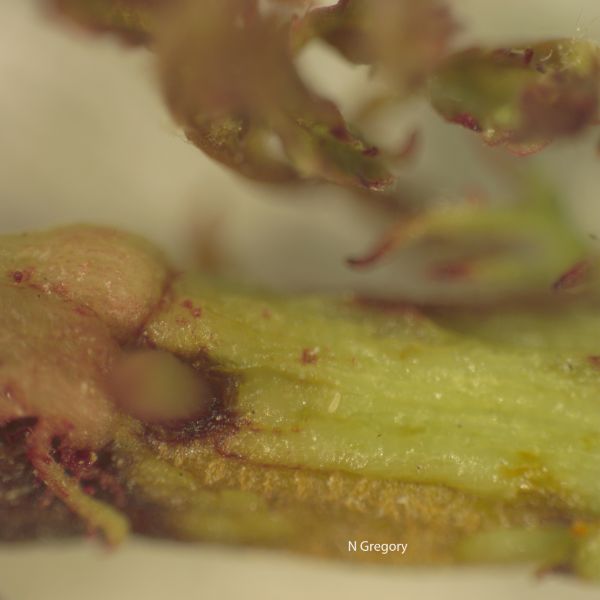
Fact Sheets And Publications
- Health & Well-being
-
Agricultural Programs
- Agribusiness
- Animal Science
- Beginning Farmer Program
- Commercial Crops
- Commericial Horticulture
- Delaware Soil Testing Program
- Disease Management
- Farm Vitality and Health Project
- Irrigation
- Nutrient Management
-
Insect Pest Management
- Insect Trapping Program
- IPM Hot Topics
- Commercial Field Crop Insect Management
- Commercial Field Crop Disease Management
- Commercial Fruit & Vegetable Crop Pest Management
- EIPM Implementation Projects
- Pollinators
- Research and Extension Demonstration Results
- Brown Marmorated Stink Bug (BMSB) Management, Research, and Resources
- Publications
- Pesticide Safety Education Program
- UD Plant Diagnostic Clinic
- Variety Trials
- Weed Science
- Certified Crop Advisor Program
- Poultry Biosecurity
- 4-H
-
Horticulture
- Climate Variability and Change
- Delaware Soil Testing Program
- Forestry
- Lawn and Garden
- Master Gardeners
- Master Naturalist Program
-
Nutrient Management
- Nutrient Management Certification
- Continuing Education for Nutrient Management
- Nutrient Management Planning Resources
- Commercial Nutrient Handler Resources
- Poultry Litter and Manure Management
- Turf Management
- Agriculture Notebook
- Horticulture Handbook
- Agriculture & Horticulture Handbooks
- Crop Production
- Soil Fertility
- Delaware Climate Change Coordination Initiative (DECCCI)
- Salt Impacted Agricultural Lands

Rose Rosette Disease
Description and Geographic Distribution

ROSE ROSETTE DISEASE (RRD) is specific to Rosa species and is caused by the rose rosette virus, which is carried by a very small eriophyid mite, or graft transmitted. The virus disease is a threat to all cultivated roses, even rose cultivars with some disease resistance to black spot, such as the Knockout Series. Symptoms include abnormal and persistent red coloration of shoots, accompanied by shortened internodes and distortion, distorted flower buds or lack of buds, extreme thorniness (but softer thorns), and decline. RRD was first found in the Western U.S. in the 1940’s, and has been observed for over ten years on multiflora rose in the Delaware, Maryland, and Pennsylvania region. RRD can be difficult to diagnose, but the presence of the eriophyid mite in the leaf axils and buds was a sign used to confirm the disease. Symptoms of herbicide injury and powdery mildew may look similar and be confused with RRD. The virus is carried by the wingless, sausage-shaped eriophyid mite, Phyllocoptes fructiphylus, active from May through October, and easily carried on air currents. The eriophyid mite is too small to be seen with a hand leans. The virus may also be transmitted through grafts. Once introduced into a plant, it may take weeks or months for symptoms to develop. Pruning may remove virus infected tissue, but over time the entire plant may become infected down to the roots. It is believed that the spread of invasive multiflora rose resulted in widespread distribution of rose rosette virus.
RRD Disease Management is best accomplished by avoiding the disease, but that may not always be possible. It is best to purchase clean stock from reputable sources, and eradicate multiflora from adjacent landscapes if possible. Allow good spacing between rose plants. Keep roses in good vigor by regular pruning and fertilization. If RRD is detected (lab confirmation may be necessary), trim plants immediately. If symptoms persist on new growth after pruning, remove the plant and do not compost or chip nearby. Eriophyid mites are difficult to control with chemicals, products labeled for spider mites will not control, and chemicals will also kill beneficial predatory mites. Insecticidal soap, kaolin clay, or neem oil may have some effect on populations of eriophyid mites. Work is in progress on breeding for resistance to rose rosette virus in rose cultivars.
NFG 2/2015
UD Cooperative Extension
This institution is an equal opportunity provider.
In accordance with Federal law and U.S. Department of Agriculture policy, Cooperative Extension is prohibited from discriminating on the basis of race, color, national origin, sex, age, or disability.
The University of Delaware is an Equal Opportunity Institution and Provider. Visit UD’s Office of Equity & Inclusion to learn more.
Additional Links
531 South College Avenue Newark, DE 19716 (302) 831-2501
